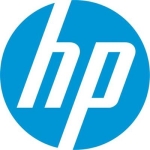What is our primary use case?
It comes inbuilt with Windows Server and Windows 10, so we are using its latest version. It is deployed centrally on all the platforms, whether it is a virtual environment, a BYOD device, or an office device. It is deployed everywhere.
All of our users are on Office 365. By default, every user is getting Office 365, and we are also incorporating this into data leak prevention. We have also enabled Azure Active Directory, so policies are deployed directly from our active directory.
How has it helped my organization?
It has reduced admin overhead. Because it comes inbuilt with Windows, we don't have to deal with the complication of using a third-party solution. We stopped using Symantec Antivirus three years ago. Previously, we had to find a person who knew how to manage Symantec Antivirus. Now, we don't have that overhead. It is also less taxing on the admins because they don't need to license an extra software every year and then deploy and manage those licenses. Everything is seamlessly managed from a central application.
Our full backup is on OneDrive. We had deployed separate storage area networks to back up important data for off-site users, not on-site users. In the current scenario of work from home, users need to establish a VPN connection to run our backup system. When they are at home, we cannot back up their systems if they don't have good connectivity. We also can't tax their broadband connections. Incorporating OneDrive as a backup solution with Windows Defender and Windows 10 has helped us immensely. We were not prepared for having people working from home because we always worked from the office, and 100% office attendance was required, but due to the pandemic, people moved to their hometowns, and we could no longer manage those systems. It became a headache for us when people used to report that their Windows got corrupted. Because they were working from home and there is a big problem of electricity in India, if electricity is not there, the systems suddenly shut down, and the registry gets corrupted. All these things are difficult to handle when you're at a remote location and you don't have your eyes and hands on that particular location. In such times, Windows Defender became a very big helping hand in managing the recoveries of such systems. The backups managed from OneDrive were very helpful. It has saved hundreds of hours of restoring the system in case something goes wrong. There was an instance where a user opened a spam message, and a ransomware attack was done on that system. Because the backup is managed by OneDrive, within 17 hours, this user's whole laptop was recovered without physically working on that laptop. Because of slow connectivity, it took time, but we were able to recover. This is the best feature of having OneDrive backup on the fly and recovery on the fly. These 17 hours were peanuts as compared to the data that we were able to save. This is the best selling point of having OneDrive as a backup with Windows Defender and Office 365.
What is most valuable?
The best part is that it is built into Windows, whether it is a server base or a desktop base, which gives more control over the operating system. Because Defender, the operating system, and the Office solution are by Microsoft, everything is working like hand-in-glove. Its administrative overhead is less because a desktop user has already got some experience of how to handle a Microsoft Defender notification or administer it. While working on Windows 10, every now and then, users might have seen it popping up, and they know how to do certain things. So, it is not too taxing from an administration point of view where we have to tell users what to do.
Centralizing policies and rolling everything out is done only from one console. We are able to provide restrictions based on what we want to filter, such as certain apps should not run and certain things should run. Because we are also into website development and code development, sometimes, users need to run certain software or their own build application, which is not possible to specify with an antivirus solution. With Defender, we can centrally deploy a policy where certain parts are excluded, and they can run their code in those particular parts. This is a very nice feature where we don't have to micromanage developers' PCs or exceptions.
Data leak prevention is something that our company requires, and it is incorporated in this solution. Because we are using Microsoft OneDrive, and it is easy to take the backup to OneDrive via Microsoft Defender.
It has helped in improving our security posture.
What needs improvement?
Its user interface (UI) can be improved. Currently, in the console, you have to dig down for certain things. They've got many different layers to get to things instead of having it all on the surface. You have to go three folds lower to get to specific functionality or click a particular option. It would be good if we can manage the console through menus and instead of three clicks, we can do things in one click. They need to change the UI and work on it in terms of a better user experience. For example, user management should be in one menu, license management should be in one menu, and backup management should be in one menu. Currently, if you click on a user, you will get some devices there, and some devices will be on the other menu. Its UI is complicated. In terms of functionality, everything is okay. We don't want anything to be changed in it.
For how long have I used the solution?
We have been using this solution for three years.
What do I think about the stability of the solution?
It is highly stable. We don't even have to look into it to see if it has stopped working, or whether it is doing its job well or not. We have around 500 devices in our organization, and all devices do the regular login with the logs. It is immensely stable.
What do I think about the scalability of the solution?
Its scalability is immense. There is no device, user, or policy limit. You install a device, and it is automatically configured because the policy is deployed from the centralized policy server or active directory.
We have around 500 devices in our organization, and all devices are using it. We have all kinds of devices such as laptops, desktops, notebooks, surface devices, etc. We also have in-house virtual servers on the AWS cloud and in-house physical servers. We also recommend enabling it for our client servers, and we configure policies for them.
Every person in our organization is using this solution. We have approximately 380 users. Its users include everyone from a new joiner to our management president. Last year, our strength was 260, and this year we have 380 users. We are growing, and by 2022, we should have more than 600 users. We are growing in a very good manner, and a group target is there. We are definitely going to grow.
How are customer service and technical support?
We have been using Microsoft products since the commencement of Windows 95. We have rarely used their support because they make their products in a way that makes them easy to use. Sometimes, there are flaws and issues, and because we are also a Microsoft Partner, we get support on priority. They take a case at the level where they think it will be resolved, and if someone is not able to resolve it, it automatically gets escalated.
We mostly use our in-house support. In the past 20 years, we have used their support twice. When I used their support last time around four to five years ago, they were really very helpful. They were good and very professional. I cannot comment on how their support is now with the current pandemic and people not working from the office.
Which solution did I use previously and why did I switch?
We were using Symantec Antivirus three years ago. When we were using Symantec Antivirus, users used to report that certain popups are there, and what should they do with them. They used to ask, "Is my system infected?" They used to panic on seeing those pop-ups. Most of them were unnecessary and would say that they need to have admin access or a particular software is trying to open a port. Because we are into development, it is a requirement of a developer to open certain ports and to make that application listen on certain ports. Such requirements were very difficult to configure in Symantec. It was difficult to make it understand that these ports are going to be used by developers, and they are going to be opened, and it is not a virus activity. Sometimes, the temporary folder of users used to get infected, and it used to give hundreds and hundreds of pop-ups. We didn't know how to close all those pop-ups in one go because they were not in a group. Imagine sitting and closing a hundred pop-ups. We had to click the Close button on each and every pop-up.
With Microsoft Defender, we can control notifications. We can tell which notifications should go to the users and which shouldn't go to the users and should be forwarded to the admin central console. In terms of user experience, users are happier with less annoyance of pop-ups that they used to get with Symantec Antivirus. They do not need to know each and everything that is going at the backend. Only the admins need to know certain things, and they should know them. With Microsoft Defender, users don't even get to know that they have an antivirus solution on their system because they never get any irritating pop-ups or notifications or slowness of the system. We configure everything from the backend, and we are managing their systems from one console, which is the biggest plus point of Microsoft Defender.
How was the initial setup?
Its initial setup is very easy. It took us just a couple of hours to deploy it on remote devices.
Our implementation strategy was to deploy group policies and manage the DLP policies from the central console.
What about the implementation team?
We did our own research, and because it was a lockdown, we had resources on our hands. We asked one of our system admins to look into the options and the policies that we need to deploy and what we need to do. He went over it for a month and trained the rest of the team. Within one and a half months, it was fully operational on each device, and my whole team was trained on it.
The whole job of its deployment was done by one person, and for maintenance, we have got a five-person team because we have 380 users across the clock and across the globe.
What was our ROI?
We have very much seen an ROI.
What's my experience with pricing, setup cost, and licensing?
Licenses depend upon what you are looking for and what kind of security do you want to implement. There are costs in addition to the standard licensing fees.
When we used to buy Symantec, we used to spend on 100 licenses. We used to spend approximately $2,700 for those many licenses, and they came in packs. To add one more license, I had to buy a pack with a minimum of 10 licenses. I had to spend on nine extra licenses because I can't get a single license, whereas when we go for Microsoft, we can get as many licenses as we want.
If I have 100 users today, and tomorrow, I have 90 users, I can release my 10 licenses next month. With any other software vendor, you buy licenses for one year, and you have to stick with that. If today you have 100 licenses, and tomorrow, you have 50, you have already paid for one year's license. You can't go back and tell them that I don't require these 50 licenses because I have lost my 50 users, but with Microsoft Defender, licensing is on a monthly basis. It gives you both options. You can go yearly and save on it, or you can go monthly. You will, again, save on it. It is very fair everywhere.
What other advice do I have?
My advice is, "Try it, and you will love it." If you go for any other product, you will have to manage everything separately, which becomes an overhead. You will have a separate console, separate licensing, and a separate vendor. You will also get a piece of software that is going to have a layer in between the operating system and your applications, whereas Defender incorporates itself onto the layer where the operating system is sitting. So, you don't tax your resources to manage a product that is already incorporated into all systems. Everybody knows how to use Windows and Defender, so the learning curve is also not there. It is very easy, and it offloads a lot of things such as tech requirements, separate licensing requirements, and separate vendor management.
I am not advising you to go ahead and discard whatever you are using. You should implement it in a test environment and see what your requirements are because the requirements will definitely impact the licensing. If your requirements are met, and then compare the time required to manage Defender versus the current solution that you are using. You should compare how many hours are you putting in managing both solutions with a different skill set. Only after such evaluation, you should deploy it.
The biggest lesson that I have learned from using this solution is to always keep it simple. Don't complicate.
I would rate Microsoft Defender Antivirus a nine out of 10. If they can make the UI more systematic, I can give it a 10 out of 10.
Disclosure: My company has a business relationship with this vendor other than being a customer. Partner













